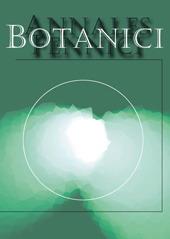We have revisited the phylogenetic evaluation of the Physcia aipolia—P. caesia lichen group (sect. Caesiae; Physciaceae, Lecanorales) in order to investigate whether new sequence data and extensive sampling can help us to understand the phylogenetic relationships in that group. We combined partial mtSSU DNA data with two previously used nuclear gene regions (betatubulin, ITS) and a group I intron. We also compared the resulting phylogenies with chemical and morphological characters. Altogether 52 specimens of the P. aipolia—P. caesia group were analysed. Direct optimization of the molecular data revealed several well-supported groups. Our results essentially agreed with those of the earlier studies, and we were able to confirm the independent taxonomic status of some controversial morphotaxa. We also discovered at least two distinct clades that potentially represent species new to science. A new nomenclatural combination, Physcia alnophila (Vain.) Loht., Moberg, Myllys & Tehler, is proposed.
How to translate text using browser tools
1 February 2009
New Entities in Physcia aipolia—P. caesia Group (Physciaceae, Ascomycetes): An Analysis Based on mtSSU, ITS, Group I Intron and Betatubulin Sequences
Katileena Lohtander,
Leena Myllys,
Mari Källersjö,
Roland Moberg,
Soili Stenroos,
Anders Tehler
ACCESS THE FULL ARTICLE

Annales Botanici Fennici
Vol. 46 • No. 1
February 2009
Vol. 46 • No. 1
February 2009
betatubulin
intron
ITS
lichen
mtSSU rDNA
phylogeny
Physcia




